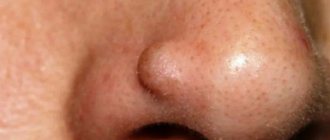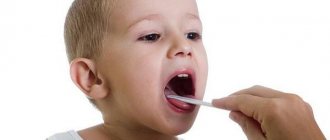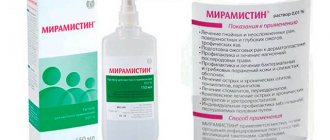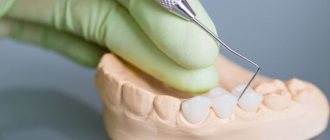Labial frenulum tears are injuries in the mouth. They may cause bleeding but rarely require medical attention.
The labial frenulum is a thin layer of tissue that connects the lips to the gums and bones of the face. There are two different types of labial frenulum:
- the maxillary labial frenulum, which connects the upper lip to the mouth;
- the mandibular labial frenulum, which connects the lower lip to the mouth.
The frenulum of the lips helps keep them in place while the jaw and facial bones grow.
These injuries are usually treated at home, but in some cases medical attention may be required.
First aid for a ruptured upper frenulum
Upper frenulum ruptures are common in children. The main symptom is bleeding from the upper gums and lips.
These injuries rarely require treatment and heal without stitches.
First aid tips for a torn frenulum include:
- Press your outer lip against your teeth for 10 minutes to stop bleeding;
- do not pull out the lip to check the injury, as this may renew the bleeding.
Be sure to check for other signs of swelling or infection after 3 days. After this time there should be no bleeding.
When to perform the operation?
It is best to perform the operation on children aged 5 to 8 years during the period when baby teeth are replaced by permanent teeth. The most appropriate moment is when the lateral incisors (“twos”) have not yet erupted, and the central ones have appeared by about a third. Plastic surgery will prevent the development of diastema and will help the incisors to take a central place.
The operation can be performed on both adolescents and adults. Plastic surgery of the frenulum of the upper lip in infants is performed only according to strict indications that affect the quality of the child’s nutrition.
In adulthood, surgery most likely will not solve the problem, but it will greatly facilitate the process of prosthetics.
Can it heal on its own?
Most frenulum tears heal on their own in 3-4 days. Infections or other complications are rare.
While the injury is healing, you can apply a cold compress to it for 20 minutes to relieve pain.
Over-the-counter pain relievers such as Tylenol or ibuprofen are also helpful.
After a frenulum rupture, it is important to stay hydrated. A person should stick to soft foods to avoid chewing and avoid salty, sour or spicy foods. This may irritate the wound.
What is dangerous about the pathology of the frenulum attachment?
Indications for frenuloplasty arise not because of doctors’ desire to correct an anatomical feature, but for compelling reasons that affect the health and beauty of the smile. A similar defect results in:
- to the formation of a diastema - an excess gap (gap) between the front incisors, which, moreover, tends to expand. A short frenulum is fixed too close to the edge of the alveolar process and pushes the teeth in different directions;
- the appearance of a gum pocket - a depression behind the gum due to its injury by the frenulum, where food debris begins to accumulate, tartar forms, and the exposed necks of the teeth suffer from increased sensitivity. Ultimately, this process can lead to periodontitis, loosening and loss of teeth;
- speech problems - with a short frenulum it is difficult to pronounce many consonants and some vowels (“o”, “u”);
- bite pathologies - due to improper closure, tooth enamel is erased, teeth grow in the wrong direction, oral hygiene, the quality of chewing food and the functioning of the entire gastrointestinal tract deteriorate, and at the same time, a short frenulum prevents the correct installation of the braces system;
- difficulties when performing prosthetics - a short frenulum does not allow the prosthesis to be firmly held in the mouth, and it may fall out while eating or talking;
- injury during individual oral hygiene and its deterioration in general.
Complications
If the labial frenulum is torn, there is a risk of infection. However, a doctor can easily treat these infections.
A labial frenulum tear is unlikely to cause serious complications. However, people with abnormal labial frenulum structure may experience:
- receding gums around teeth;
- large gap between the upper front teeth;
- Difficulty moving lips.
The surgeon can correct these problems through medical procedures, including frenulum removal.
Consequences of a shortened frenulum
If you lift the upper or lower lip, you will see an elastic fold connecting the latter to the gum. Normally, it is located in the middle of the gum. The shortened one starts from the roots of the teeth. It happens that it is too wide and inelastic, absent, and the frenulum often ruptures.
All these pathologies are indications for surgical intervention. Parents, as a rule, do not pay attention to this anomaly. The mobility and elasticity of this fold can only be assessed by a dentist.
- Difficulty with breastfeeding. The baby will not be able to latch onto the nipple normally. Feeding will be delayed, he will get tired and begin to be capricious. It is quite possible that the child will refuse the breast in favor of the pacifier, since drinking from it is much easier;
- Chewing will become difficult when feeding solid foods. Therefore, he will swallow large pieces, which will negatively affect digestion;
- A short one will stretch the gums, which will affect the dentition - the front incisors will not close, and there will be a gap between them. This will negatively affect your smile later;
- If you do not take action in the presence of milk teeth, then when permanent teeth appear, an incorrect bite will form. The front incisors will protrude forward as the gums are stretched excessively. To correct pathology of the upper or lower jaw, long-term treatment will be required;
- Speech defects due to too much tension on the lip. Lip sounds will sound bad (ooh);
This is interesting: How to pull out a baby tooth at home: tie a thread on the tooth
When to see a doctor?
Most people can treat a frenulum tear at home. However, in some situations a doctor may be required.
A person should see a doctor within 24 hours if the injury appears infected but there is no fever.
You should consult a doctor immediately if the following symptoms appear:
- a deep tear that may require stitches;
- severe pain that lasts for several hours;
- difficulty swallowing liquids, including saliva;
- problems with fully opening or closing the mouth;
- increased pain or swelling after 48 hours;
- heat.
If you find an error, please select a piece of text and press Ctrl+Enter.
How is the operation performed?
During a frenuloplasty operation, depending on the type of its structure, the surgeon cuts the fold, excises excess tissue or moves the point of its attachment to the gum. The procedure is performed under local anesthesia, is absolutely painless and lasts no more than 10-15 minutes.
At the IONIKA clinic, doctors are equally proficient in both methods of frenuloplasty - laser and scalpel. Each technique has its own strict indications, its advantages and disadvantages. Despite the fact that laser plastic surgery of the upper lip frenulum has gained the greatest popularity today, we sensibly assess each clinical situation and choose the optimal way to solve the problem based on the patient’s characteristics.
- Laser . This is a minimally invasive method in which a laser beam “dissolves” the frenulum or removes excess tissue, immediately sealing the edges of the wound. The operation is completely bloodless, without the need for stitches, and rehabilitation takes a minimum of time. Laser plastic surgery of the lower lip frenulum is most often used when working with young patients.
- With a scalpel . The classical method is also low-traumatic and is supplemented only by suturing. It is used, as a rule, in cases with a thickened frenulum.
Pain and other symptoms of frenulum rupture in the mouth
There are three frenulums in the oral cavity of children - the frenulum of the upper and lower lip and tongue. Various injuries to these mucous cords are also not uncommon. In clinical practice, frenulum tear and rupture are distinguished, and the amount of assistance provided will depend on this. The causes of injury can be a fall, careless brushing of teeth, and even infectious diseases, etc.
Symptoms of rupture will be severe and acute pain, bleeding, especially severe when the frenulum of the tongue ruptures. When examining the oral cavity, a hematoma, a blood clot on the body of the frenulum, is noticeable. After an injury, children may refuse to talk for a long time and try to make limited sounds.
Short frenulum of the upper lip in a child
The problem of oral frenulum occurs quite often.
According to statistics, their frequency is approximately 10 percent of children. If not diagnosed in a timely manner, they can cause a lot of difficulties for the child in the future. And the consequences are very serious. After all, bridles can make adjustments not only to appearance, changing the aesthetics of the face and smile for the worse, but also significantly affect speech functions and the ability to eat normally. Therefore, it is very important to promptly notice this disorder in a child and seek medical help.
There are three frenulums in the oral cavity, each of these frenulums is a small cord. Despite their small size, they can have a big impact on a baby’s daily life.
With their help, to a large extent, the child is nourished, the oral mucosa is maintained in normal condition, and most sounds are correctly and clearly pronounced. To a certain extent, frenulums can affect the degree of bite. And, of course, the appearance of the baby’s face also depends to a large extent on the condition of the frenulum.
Specifically, bridles are:
- upper lip. It performs a connecting function between the upper lip and the gum located on the upper jaw. Its weaving occurs above the front incisors located in the dentition;
- lower lip. Its attachment occurs similarly to the upper lip, the principle is the same, but on the lower jaw;
- language. In its structure and functions, this bridle is more complex than other bridles. This is what parents most often have questions about. But not because problems with it occur more often, but only because parents mistakenly believe that it is the only frenulum of its kind in the child’s mouth. The frenulum connects the tongue and the sublingual area.
First aid
Providing first aid if an injury occurs will help the damaged tissues recover faster in the future. The very first thing parents should do before the ambulance arrives is to calm the child and calm down themselves. The very first symptom of a rupture or tear is the appearance of blood and pain. If you pull the lip a little, the damaged area is clearly visible. The algorithm for further actions is as follows:
- Wash your hands well with soap and running water. Carefully examine the baby's mouth to determine the location of the bleeding.
- To stop the bleeding, apply a cotton pad or napkin soaked in a solution of hydrogen peroxide, chlorhexidine or miramistin to the surface of the damaged area.
- When the antiseptic treatment is completed, it is necessary to rinse the child’s mouth with boiled water. Do not use tap water. This procedure will help prevent the introduction of microbes into the wound.
- Apply cold compresses to the outside of the lip for three to four minutes. To prevent hypothermia, wrap the ice in a clean towel.
- Carefully ensure that the baby does not touch his face with his hands to avoid infection. Wash your child's hands with soap.
- Be sure to contact your pediatric dentist.
Serious injury requires stitches. Further recommendations from the doctor will help damaged tissues recover faster.
What to do and how to remove the defect?
Medicine does not stand still. Nowadays, doctors offer several ways to correct the frenulum. The baby who tore it will undergo appropriate plastic surgery. There is plastic surgery using a scalpel, gum scissors, and a new method of removal - laser. The doctor decides which method is best to resort to. Any procedure has its own indications and contraindications. This is discussed with a specialist.
Laser frenulum removal is an innovative method. It has a lot of positive reviews not only from doctors, but also from patients.
There are methods that have proven themselves to be positive over the years:
Procedure
| Description | |
| Frenotomy | The frenulum is cut vertically and sutured horizontally. |
| Frenectomy | The method is most suitable for large strands. It is cut along its entire length, and then the interdental papilla and all excess tissue are removed. |
| Frenuloplasty I | The frenulum is cut with a scalpel or scissors. A diamond-shaped defect remains. For mobilization, the edges close to the incision of the mucous membrane are excised and, using a raspator, brought closer to the periosteum, closer to the formed vestibule. Then everything is sutured. |
| Frenuloplasty II (according to Limberg) | A vertical incision and two oblique ones are made in the center of the frenulum. Triangular flaps are formed and mobilized. Then they are fixed taking into account that the central cut is located horizontally. It is sutured with interrupted sutures. |
What to do if a child has torn the frenulum on the upper lip
If a child has torn the frenulum on the upper lip, the first thing you need to do is calm the baby down. Then inspect the damage and treat it with an aqueous solution of chlorhexidine or hydrogen peroxide, then rinse the child’s mouth with clean water at room temperature. A cold compress will relieve pain. Within 2-3 days, take the child to the pediatric dentist. If bleeding continues for a long time and part of the frenulum has separated from the gum or lip, then medical advice should be obtained within the first 24 hours after the injury.
Possible consequences
For minor damage there are usually no consequences. Also, they do not exist if all medical recommendations are followed. If there is no medical intervention, the tissues grow together incorrectly, and as the child grows up, certain problems appear:
- Difficulties with pronunciation.
- Penetration of pathogenic microflora, decay.
- Inflammatory processes in the organs of the digestive system due to insufficient chewing of food.
Chief author and editor-in-chief: Makarskaya S.E., 29 years of experience.
Possible consequences
Often minor damage does not cause any unpleasant consequences. The same thing applies if the mucous membrane has been restored to its normal state. If medical correction has not been carried out, the tissues have grown together incorrectly, this can cause problems as a person grows and in his later adult life:
- problems with pronouncing certain sounds, especially if the injury occurred before the baby first spoke;
- susceptibility to infections of the oral cavity, if the tissues have grown together crookedly, there is no normal oral hygiene;
- Gastrointestinal problems can occur due to the fact that children do not chew food well after gum injuries.
First aid
It is very important to provide first aid correctly:
- The main rule is not to panic. Calm the child and calm yourself, the second is most preferable, because an excited mother can make a lot of mistakes.
- If there is massive bleeding, apply cold (something from the refrigerator) to the lip, but not for long, intermittently.
- After stopping the bleeding, you need to rinse your mouth with any antiseptic (herbal decoctions, Furacilin, Chlorhexidine, Miramistin).
- For children who, due to their age, are not able to rinse their mouths on their own, the mother should treat the wound with a cotton swab dipped in a decoction of herbs. For this, herbs such as St. John's wort, chamomile, and sage are used.
- After all the procedures performed, be sure to visit a doctor. The doctor will conduct an examination, assess the extent of the damage and prescribe further treatment if necessary.











